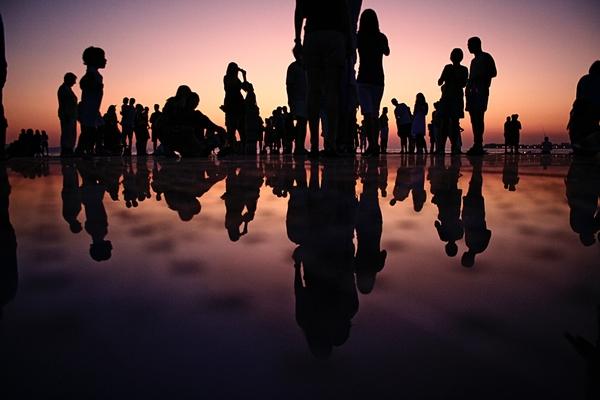
On the Move: When Climate Changes Communities in the US
When you hear the term “climate refugees,” what picture comes to mind?
Most Americans might imagine African farmers facing severe drought or island nations facing rising seas. While these stories are heart-wrenching enough on their own, they don’t give the full picture. Right here in the United States, we’re beginning to see the climate crisis displace families and communities like never before. Which leaves us with a choice. We can act now to help those already in need and embrace the practical clean energy solutions that will cut emissions and help solve the crisis. Or we can look forward to a future where these painful stories become everyday events all around the world.
Rising Seas and the First US Climate Refugees
For many, the climate crisis shows itself slowly. Native residents on the Isle de Jean Charles have been living by their own lights for generations. Deep in the wetlands of Southern Louisiana, the community of Native Americans has been shaped by the island’s rich ecology and unique cultural traditions. As the effects of climate change have played out, however, residents on the island have no choice but to escape. They are considered the first climate refugees in the US.
They are not alone: many Alaskan Native communities are confronting the reality of melting ice at its very source. Take the villagers of Kivalina in Alaska, who vroom around on snowmobiles for transport and have survived for centuries by hunting. At this exact moment, their home is disappearing into the Arctic Ocean. While the Obama Administration recognized the severity of the situation for these snowy villages, the future of the Kivalina community – and many others - remains in question.
And you don’t have to travel to sovereign tribes in the Gulf or the Arctic to find sinking societies. Less than 100 miles from the White House, Tangier Island is subsiding into Chesapeake Bay. It’s a community full of crab traps and hello’s, where the small-town “everyone knows everyone” feel comes to life. And it’s practically in the backyard of Washington, DC.
So why does the issue remain millions of miles away from political conversations?
As if the gradual plunge of American towns isn’t enough on its own to warrant action, recent events have shown that catastrophic climate impacts are not some futuristic events in faraway places. They’re happening right now in the United States.
Moving Quickly
Droughts and rising seas displace people over long periods of time. Extreme weather shows no such patience. In a matter of days or even hours, powerful winds and torrential rains can drastically and abruptly transform roads, neighborhoods, even whole cities as we knew them. Hurricanes Harvey, Irma, and Maria have shown us the costs of such intensity as thousands and thousands from Texas to Florida to Puerto Rico have been forced to leave their homes in recent months.
We hear much about the billions upon billions of dollars in structural damages. We hear about the climatic science, rainfall totals, and wind speeds. No doubt, these are important factors to consider.
But what about the value of a community itself? How do we quantify that?
We can’t, and we shouldn’t have to. Each place has a story to tell – and a network of people who make the story come to life. Extreme weather events can damage and even destroy the everyday places, institutions, and means of life that hold these networks together, with profound consequences for the community.
In Puerto Rico in particular, many citizens find themselves without water or electricity nearly a month after Hurricane Maria. Many students and young professionals are headed to the US mainland, raising serious questions about short-term rebuilding on the island as well as long-term impacts on community and identity.
We know that warmer oceans crank up the intensity of hurricanes. We also know that, despite sound science, the Trump Administration refuses to acknowledge the link between climate change and extreme weather events like Harvey. But what we may forget is that hurricanes do not simply come and go. They leave scars. They become part of history. And as recent months have put on full display, they send people on the move.
Moving forward
We can expect more people on the move in the future. Reuters projects that 13 million coastal Americans could be displaced by six feet of sea level rise.
But these numbers are not a done deal. Practical solutions from habitat conservation to green roofs to micro-grid solar solutions are cutting the greenhouse gas emissions driving climate change while also helping coastal communities build resilience. On a large scale, cities and states are taking action by shifting to clean energy.
That's where you come in.
There are actions you can take now to ensure that less people lose their communities, homes, and lives due to a crisis we have the tools to address.
One step is compassion for those in need.
The second is standing up for America's Clean Power Plan, which the Trump Administration has recently proposed repealing. EPA designed the Clean Power Plan to cut emissions, accelerate the transition to green energy, and protect the vitality of American communities. Millions of Americans spoke up to support the plan when it was first proposed. Now we need millions more to speak up to protect it.
Let EPA know you stand for the Clean Power Plan.
Make no mistake: the world is moving forward to a clean energy future. But fossil fuel interests are fighting us every step of the way and as this administration has shown us, nothing is guaranteed. So let’s use our voices for family, home, and community in the face of the climate crisis.


